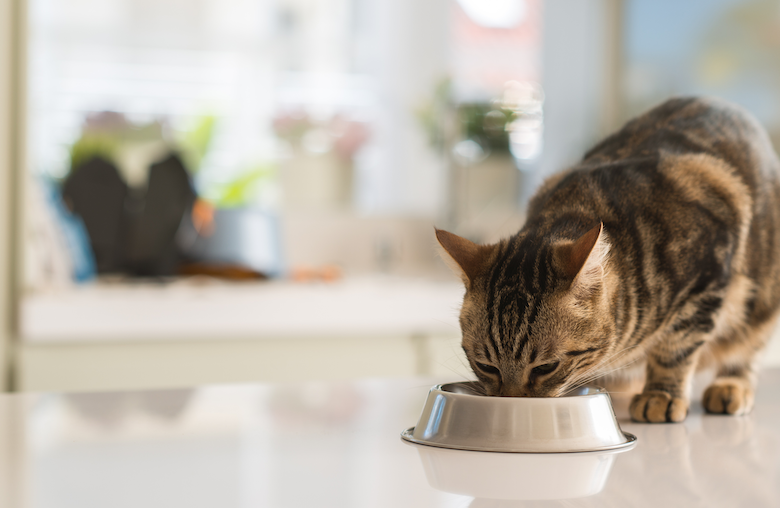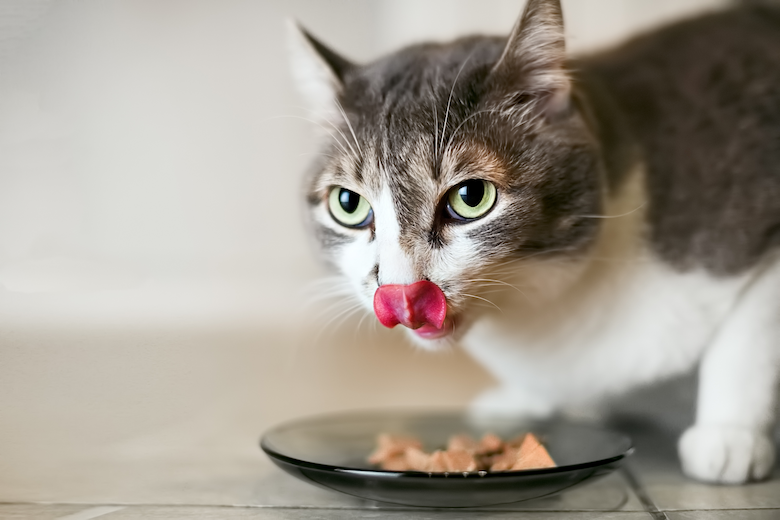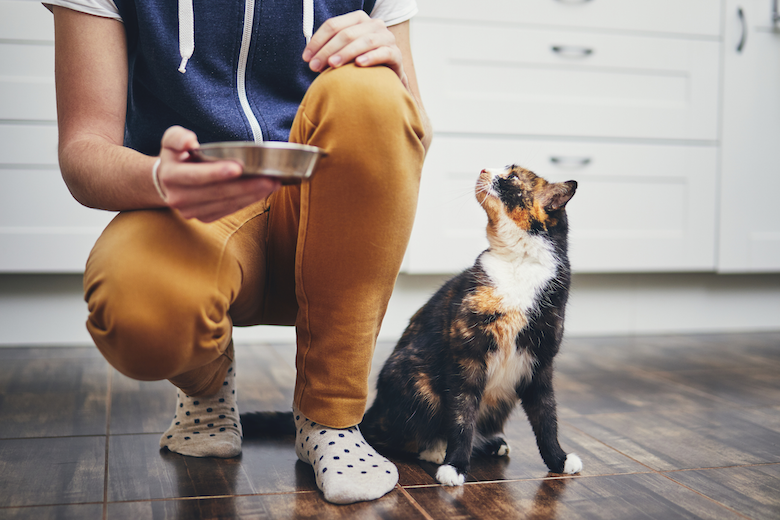Cats, at least stereotypically, like to live life on their own terms. Unlike dogs who live to please, Kitty is more likely to tell you you’re doing such a lousy job petting her or that your new shaggy rug is nowhere near as great as the plush one you used to have.
Some of that is internet meme lore, but when it comes to food, cats tend to be far pickier about what they eat, and that can make it difficult to switch things up.
“Cats are just more particular about palatability, texture and flavor,” says Dr. Angie Kraus from I and love and you.
But Dr. Kraus says wet food is better for cats than dry food.
“Cats are carnivores,” she says. “When we feed them kibble, we are feeding them a lot of carbohydrates. In order to make a kibble, you have to make it crunchy, which requires some kind of carbohydrate like … rice.”
A diet high in carbs can lead to obesity, dental and gastrointestinal issues and pancreatitis. Even if Kitty loves her kibble, Dr. Kraus believes it’s worth it to transition a cat from dry to wet food. She shares tips for getting even the most particular kitty on board with the change.

Photo: AaronAmat / Getty Images
Go slow
Dr. Kraus advises against trying to go cold turkey by putting out dry food one day and only wet food the next. “Cats will definitely win out in a starvation game,” she says. “If you don’t feed a cat for 72 hours, they can have pretty serious issues like liver disease that aren’t reversible and quite possibly life-threatening.” Instead, try putting a little wet food out to see if the cat is interested. “If they are not, I will mix it into what they are already liking so they can slowly get [used to it].” Every couple of days, decrease the amount of dry food and increase the amount of wet food. Patience is a virtue. Dr. Kraus says that some cats may be able to transition from dry to wet food in one week. “For the cats who aren’t as easy-going, it can take a few months,” she warns.
Get creative
If Kitty isn’t taking to her new diet, you may need to try a few things out. Remember, cats have their idiocracies. “There are some cats that have a lot of specific temperature preferences,” Dr. Kraus says. “People trying to get their cat from kibble to wet foods may find they like their food slightly warm or with a little water.” Sometimes, presentation can be everything. “They don’t like the bowl. They don’t want their whiskers to touch the bowl, or they want a plate, but they don’t want that plate to be plastic,” Dr. Kraus says even the location of the bowl or plate and the time you’re putting it out can affect whether Kitty takes the food or leaves it. Play around with it.
Related: Make Mealtime Fun for Cats
Sometimes, combo-feeding is a good compromise. “If there can be any wet, that’s better, and a lot of people have to combo feed because their cats refuse to eat only wet food, and some cats will only eat dry food once they have become accustomed to dry food,” Dr. Kraus says.

Photo: Sergey Pakulin/Getty Images
What about changing from wet cat food to dry food?
Though Dr. Kraus says wet is best, sometimes people want to do the opposite and transition to dry food.
“The most practical consideration is being able to leave [the cat over the weekend] without a pet sitter, or economical reasons,” Dr. Kraus says. “Dry food can be a lot cheaper than wet food.”
This transition should also be slow. Start by putting out a little kibble to see if the cat will take it. If not, mix it with wet food. Not working? “There are a lot of fun food toys and dispensers that make it interesting,” Dr. Kraus says. “They can roll a ball around, and it can dispense food or it will look like grass, and they have to bat it around to get it out of the grass.”
Top photograph: Chalabala / Getty Images
Read Next: We’re Feeding Cats Wrong — Ditch the Cat Food Bowls and Change the Schedules
